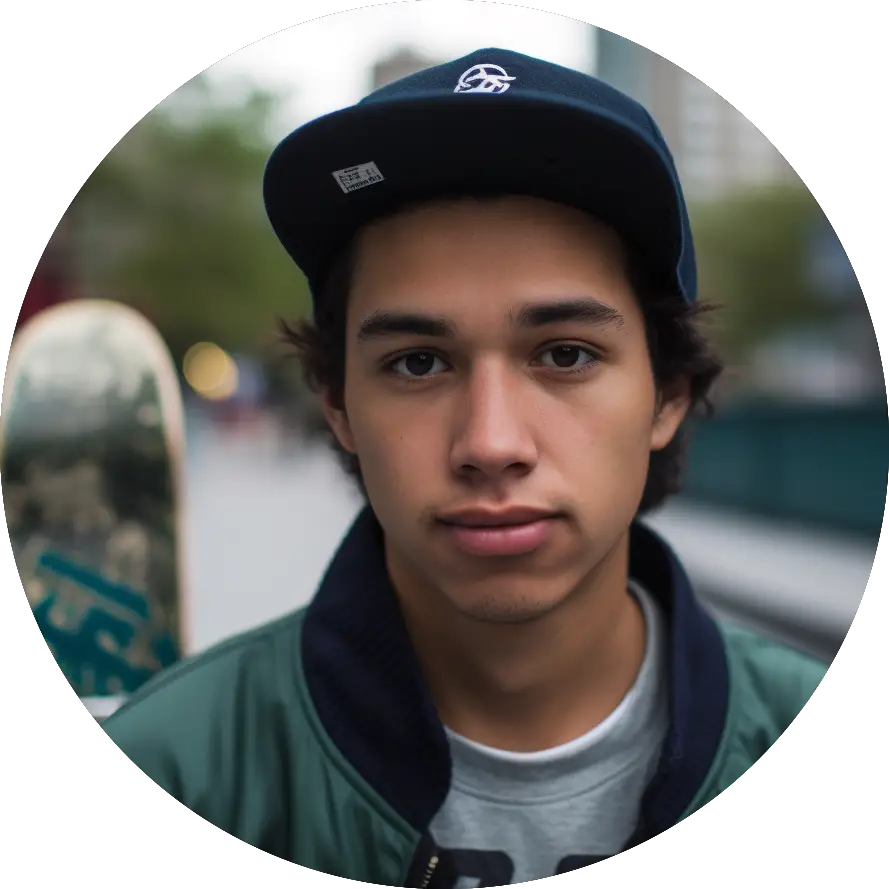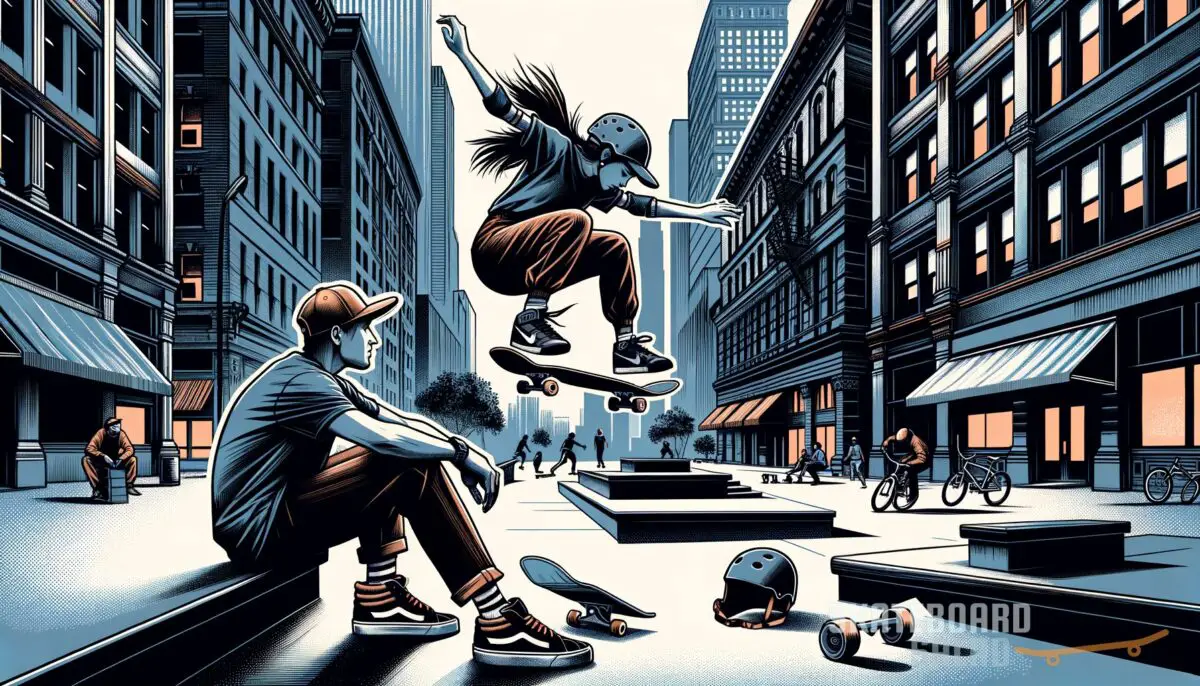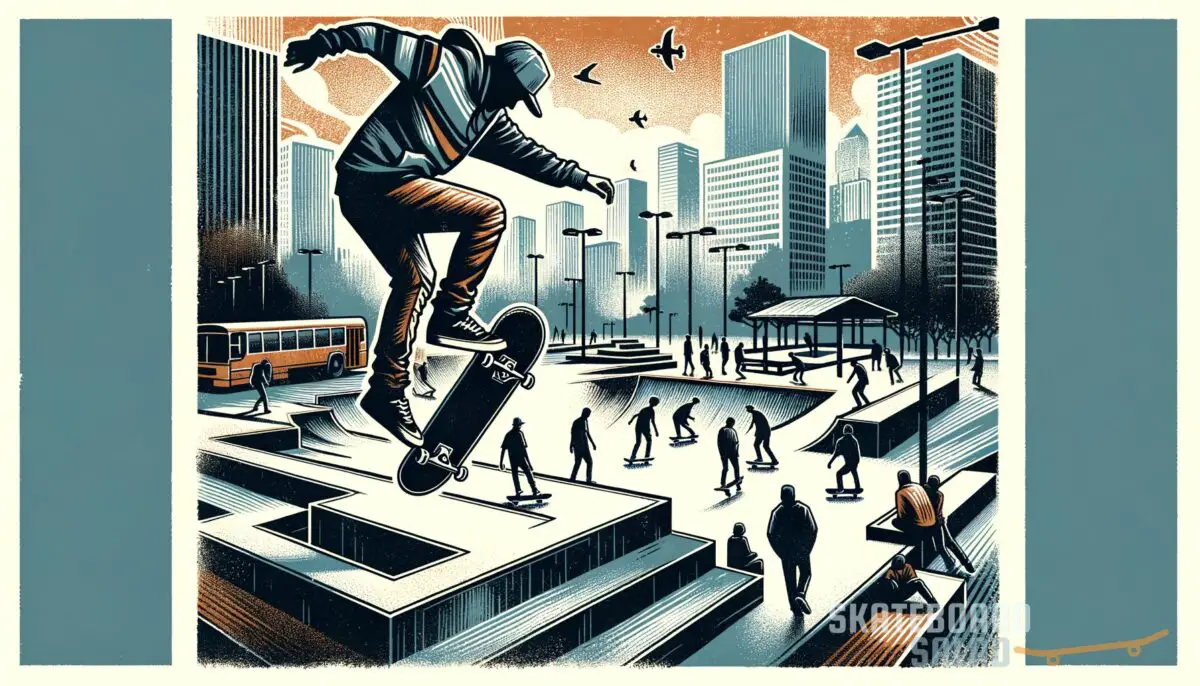Ever wondered how to command a bank like a pro skater or been bewildered at how an Ollie morphs when transitioning from flat ground to an angled bank? Well, you’ve come to the right place! Drawing inspiration from some of the most iconic skateboarding legends and featuring a treasure trove of tips and tricks, we’ll explore how to master skating on banks. So, are you ready to ride the wave and grind through this action-packed journey?
What is a bank? It’s a skateable surface that angles either up or down from flat ground, often mixed with other skatepark features to form pyramids or A-frames.
What makes banks iconic?
Banks have always held a special place in skateboarding, from being platforms for perfecting your Kickflips to serving as focal points in skate parks. One of the most cherished bank spots happens to be the Brooklyn Banks in New York City. This gnarly spot was the breeding ground for legendary skaters like Keith Hufnagel, Jason Dill, and Chad Muska.
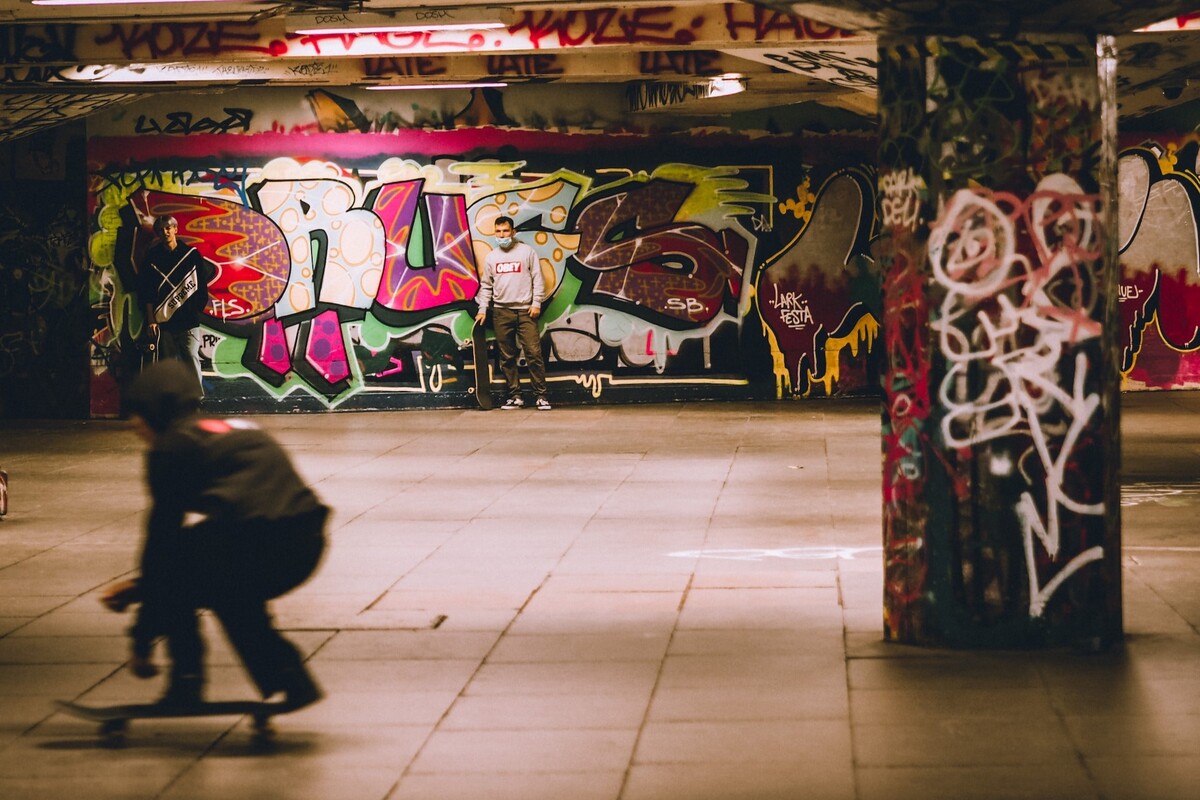
For over 13 years, the Brooklyn Banks Skatepark remained closed due to Brooklyn Bridge renovations. But after a long wait, the city of New York and the Brooklyn Banks reopened this iconic location. This year, in May, coinciding with the 140th anniversary of the bridge above, it reopened as a component of a broader public area named the Arches.
Enjoi Whitey Panda Complete Skateboard

Enjoi Whitey Panda Complete Skateboard
How do we dominate the bank?
The simplicity of banks belies their ability to transform your skating techniques significantly. It’s all about keeping your weight equally distributed. The switch from flat to uphill to downhill is a rollercoaster ride requiring an intricate balance game.
- Learn to pivot: Try pivoting on the flat before transferring it onto a bank. Frontside, backside, find your side.
- Master ‘Fakie’: This technique helps you shift your weight differently – a crucial requirement for bank skating. In no time, you’ll be doing Fakie like a champ!
- Mind the fall: Avoid putting too much weight on the nose; believe me, slipping on a bank is pretty wack.
What are some tricks you can do on banks?
Below is a peek into the wide array of flatground tricks you could master on a bank, paired with some skate industry legends known for owning these tricks.
- Master the Ollie: An absolute essential. Once you switch from flat ground to a bank, you’ll need to tweak your Ollie technique – factoring in the bank’s tilt!
- Get adventurous: Go for a Pop-Shove-It or a Kickflip post your Ollie adventures. Practice makes perfect.
- Avert a slam: If you stumble upon a trick, don’t retreat – strike back! Hop back on your board and show that trick who’s boss.
Before you step onto a bank and take that leap of faith, here’s a quick list of dos and don’ts to keep you in good stead!
| Do’s | Don’ts |
|---|---|
| Try working out basics on flat ground first. | Don’t rush into complex tricks. |
| Ensure your weight is evenly distributed. | Avoid putting too much weight on either end. |
| Practice on banks of different slopes for experience. | Don’t stick to a single type of bank. |
How is skateboarding’s future shaping up for banks?
In skateboarding, evolution is always the name of the game. Parks continue to harbor more creative bank formations, bridging other features together. The diversity of banks is growing, from simplistic slopes to complex pyramids and A-frames. As for skaters, well, new tricks are always on the horizon. So, now more than ever, the ability to rip through banks is a solid choice.
“Skateboarding is an art form, a lifestyle and a sport.”- Tony Hawk
Those words from the Birdman himself encapsulate the essence of skateboarding. And when it comes to tackling banks, this quote rings even truer. Banks, whether used for flatground tricks or grinds, test your balance, mimic real-world conditions, and push your skating skills to their extremes. There’s nothing like nailing a trick on a bank, knowing you’ve earned every bit of your victory. Sure, there might be a few slams on the way, but that’s skateboarding, right?
Do banks deserve their due?
In my journey with skateboarding, tackling banks has been a game-changer for me. I still remember the buzz, the first time I ventured from the safety of the flat ground and plunged onto the angled turf of the bank. Let me tell you, it felt like a whole new skateboarding dimension had unfurled before me.
The curious blend of art, lifestyle, and sport brilliantly reflects the dynamic nature of banks. Nailing an Ollie on a bank after a tonne of slams was definitely no less than artistry for me.
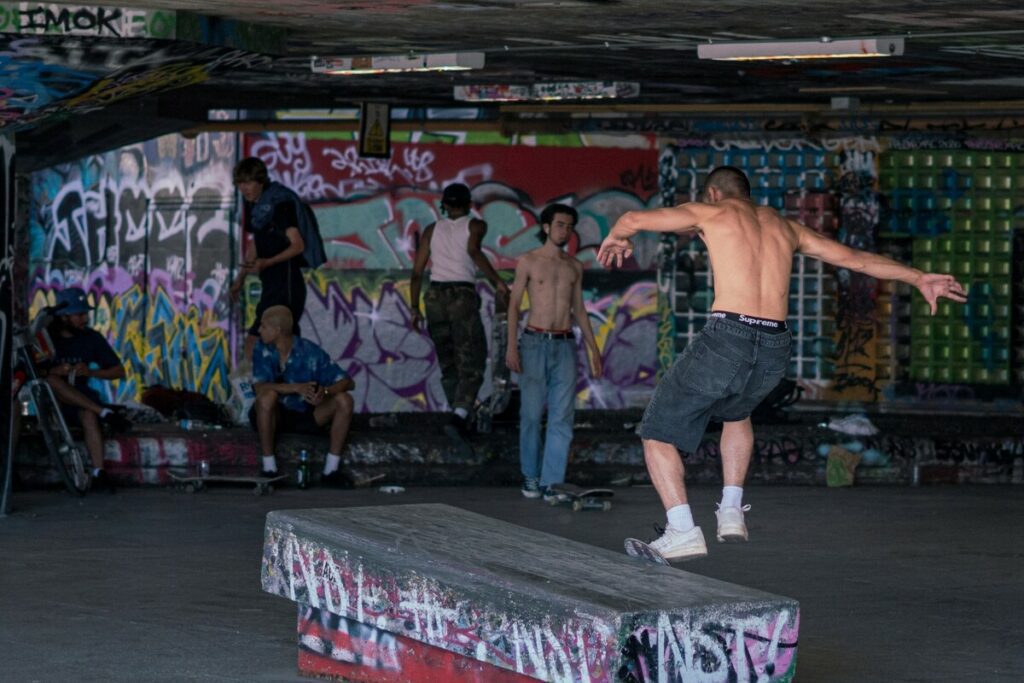
Street, park, vert, you name it, and I believe banks add a unique flavor across diverse skateboarding styles. Banks have this uncanny ability to multiply the thrill factor, making every trick, every grind, every session more vibrant and rewarding.
Shall we say then, banks are like that underpowered, overlooked video game character that surprisingly packs tons of fun and challenge once you tap into their potential? In my non-expert opinion, banks deserve more attention than they usually get. I mean, these angled wonders teach you more than just tricks; they are about mastery over balance, understanding the dynamics, and enjoying the sweet blend of difficulty and fun.
For those just starting their skateboarding journey, starting with flatground tricks before moving onto banks could be a wise strategy. Remember, folks, once you’re comfy doing Fakie on flat, banks will be your next playground.
Advantages and disadvantages of skating on banks
Learning how to skate on banks can be a transformative experience for many skaters. However, like most things, skating on banks has its own set of pros and cons.
Advantages of skating on banks
Skating on banks can significantly expand your repertoire of tricks and skills. To put it in a nutshell:
- Provides a new dimension to your skating skills.
- Helps you learn and master a wide array of tricks.
- Assists in fine-tuning your balance.
- Allows for a smooth transition between flat ground and banks.
Disadvantages of skating on banks
Despite its allure, skating on banks is not without its pitfalls. To give you an idea:
- The risk of injuries is higher due to the altered angle.
- It’s easy to miscalculate the bank’s tilt, leading to accidents.
- Mastering tricks on banks usually requires a steeper learning curve.
I hope this ride has been more than just another trick tutorial. And hey, who knows? Maybe one day, we’ll see a new iconic bank spot rise to fame, just like Brooklyn Banks once did. Until then, keep shredding, skaters! By the way, you might want to check this out, Can You Be Too Tall To Skateboard? It’s a banger of a post!
If you are more of a visual learner, check out the video below.
Frequently Asked Questions (FAQ)
Allow me to address some common and intriguing questions that often pop up around the topic of bank skating. Hopefully, these nuggets of wisdom shed more light on the epic world of banks.
Why are banks a prominent part of many skateboarding parks?
Banks are beloved for their versatility in skate parks. They offer a variable terrain and provide a mid-point between flat ground and ramps. Skaters find banks useful for practicing and mastering a multitude of tricks, which is why they have become a staple in many skateboarding parks. Additionally, their presence allows for the seamless flow of skateboarding lines. Essentially, banks open up endless creative possibilities, making the skateboarding experience more enriching and enjoyable.
How can I transfer my flatground tricks onto a bank?
The transition from flatground tricks to bank tricks can initially be challenging. But fear not; the key lies in understanding the incline. Start with basics, such as rolling up and down the bank. Feel the difference in momentum and learn how to balance your body against the slope. Once you have your Ollies dialed in, you can pretty much work your way up to more complex tricks like the Kickflip or the Pop-Shove-It. Remember, practice and patience are your allies here!
Are there any special gears necessary for bank skating?
While the essence of skateboarding lies in its simplicity and the minimal gear requirement, banks aim to challenge this norm due to their inclined surface. Although no special gear is specifically required for banks, investing in knee and elbow pads can add a layer of safety. Amidst the stoke and thrill, we often forget that banks also have a higher risk of slams. So, play it smart, folks, skate hard, but most importantly, skate safe!
How can the lessons from banks be applied in street skateboarding?
Skate park banks closely mimic many natural terrains in the streets, from pathways to inclines. The techniques honed on banks — maintaining balance, adjusting timing, or adapting tricks for different angles — are transferable to street skateboarding. So, your bank skills will come in handy the next time you see an angled platform in a streetscape. Gear up and let those lessons from banks amplify your street skating experience!
Final thoughts
Skateboarding is full of surprises, and banks are one supreme example. They may seem intimidating at first, but once you’ve felt the rhythm, there’s no backing down from banks! Did I cover all your burning questions about banks in skateboarding? Let’s keep the skate conversation going. Comment down below your questions or experiences; I read and reply to every comment.
If you found this post rad, share it with a buddy, and remember to check out the rest of my blog for more jam-packed content about skateboarding. Thanks for coming along for the ride, and remember, keep shredding those decks!
Key takeaways
This article covered the exciting world of skateboarding banks. Here are the key takeaways to remember:
- Banks are a versatile and essential feature of skateboarding parks.
- Working from basic flatground tricks to bank tricks requires practice and understanding the bank’s tilt.
- Banks teach you more than just tricks.
- They push your balanced understanding of dynamics and open up a new level of fun.
- The transition from banks to street skating is but a natural progression.

